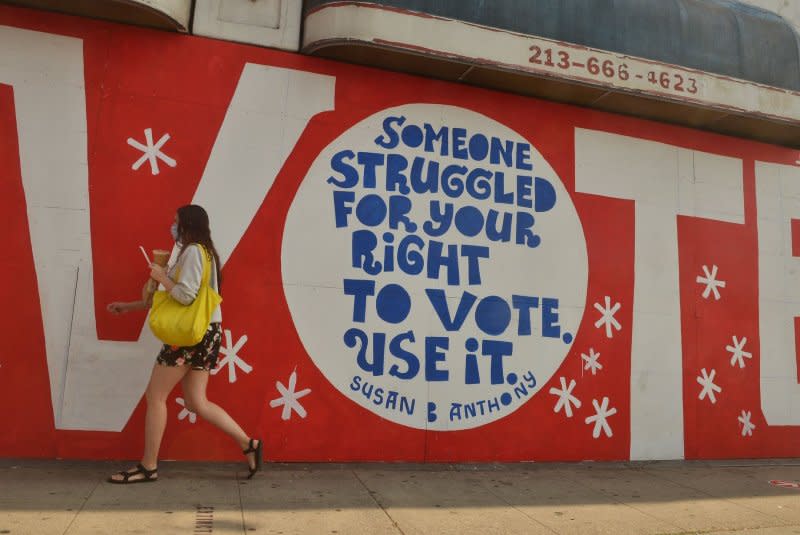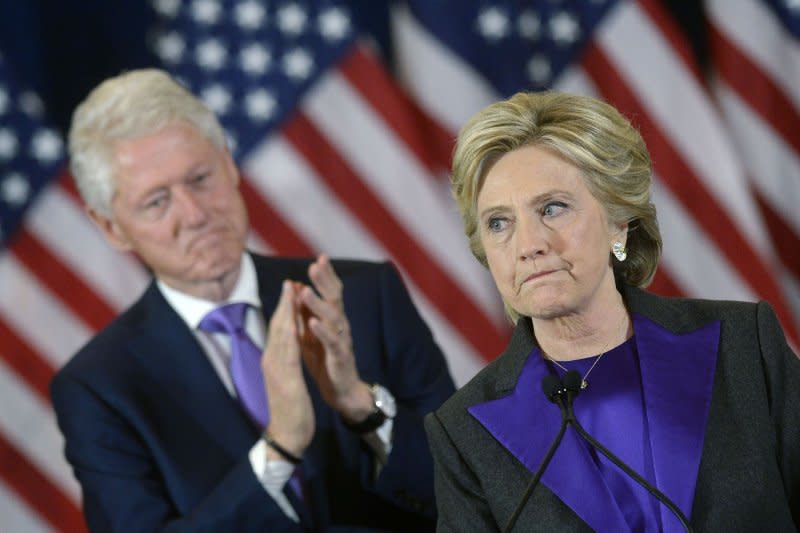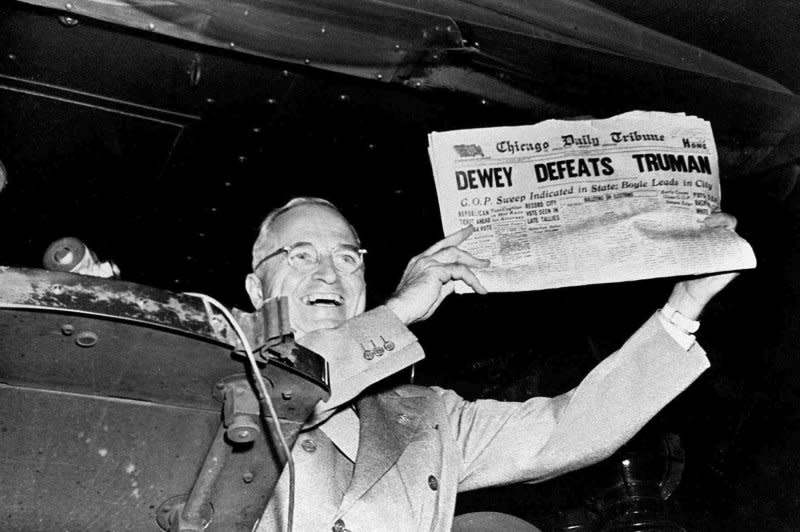Election polling: Spam calls, mistrust make it harder to predict how people will vote

CLIVE, Iowa, Aug. 8 (UPI) -- The horse-race aspect of who will be elected the next president of the United States draws voters' -- and candidates' -- attention, with polls allowing former President Donald Trump to boast front-runner status in the 2024 Republican primary, even as he battles unprecedented criminal charges.
Eight years after Trump's 2016 victory -- which many polls didn't predict -- experts say it has only gotten tougher to predict how people will vote.
Spam callers, an overworked populace and distrust in polling institutions like universities and mainstream media organizations have created greater hurdles in the pursuit of data that reliably reflect public opinion.
To collect the standard 1,000 responses, pollsters often make 20,000 calls or more. Even then, there are some demographics that are more likely to respond than others.
"We have a much harder time reaching groups, especially the Trump constituency, who are basically told by Trump to not trust these institutions," Brian Schaffner, a political science professor at Tufts University, told UPI. "These people therefore aren't taking polls as much and it's harder to get a sample that fully reflects the views of the public."

Schaffner noted that in the case of a demographic being underrepresented in a poll, the results will be weighted to better reflect the overall population. When the election is over, his team will reach out to respondents to record who actually voted.
The time of day and even the time of the year can impact who is responding to surveys. People working long hours are also less likely to answer a call from an unknown number.

There has been a significant shift to online polling since the 2012 election, according to the Pew Research Center. Opt-in sampling or online convenience sampling, which is cheaper to conduct, quadrupled between 2012 and 2020. Research has shown that people respond differently based on the method of polling. This does not mean they are universally unreliable, but factors like Internet access in rural areas and financial disposition leave large groups of people underrepresented.
Effect on turnout

The question researchers like Schaffner and Herb Asher, professor emeritus in Ohio State's political science department, have long asked is: "How does polling influence action?" Does one candidate polling way ahead discourage opposing voters from going to the ballot box?"
Schaffner believes poll results don't have a big effect on turnout.
"Most people that are going to vote are going to vote in more than one election," he said. "Even if they think the presidential election is not competitive, there may be others."
He does believe polls have more influence in primaries.
"One thing we've seen over the years is people often like to vote for the candidate who maybe isn't doing as well in the polls to make the race more competitive," he said.
"If you go back to 2008, [Barack] Obama won in Iowa, and it looked like he would win in New Hampshire. New Hampshire voters ended up going with HIllary [Clinton] instead, partly because they didn't want to be told the race was basically over."
Predicting turnout by polling is another challenge.
"When pollsters ask if you are planning to vote, most people will say 'yes,' because that's what a good citizen should say," Asher said. "If you find that the person you're talking to doesn't know where to vote or how to vote, doesn't have much info, doesn't care, you might say the probability this person is voting is not a certainty."
Trump and polls
A variety of polls from last week show Trump ahead of his GOP primary opponents by as much as 43 points. He has been touting such polls in campaign appearances, arguing that he is the only candidate who can beat Democrat President Joe Biden in the general election.
On Thursday, Trump pleaded not guilty to federal charges that he perpetrated a conspiracy to overturn the 2020 election, culminating in the Jan. 6, 2021 assault on the U.S. Capitol. That case is Trump's third criminal indictment. His legal woes have not dampened his showing in polls so far.
It was a different story in 2016, when Democrat Hillary Clinton was projected to beat Trump and become the first woman president. When Trump won, the perception of many was that the pollsters had gotten it wrong in a big way.
The most trusted national polls were mostly accurate in predicting that Clinton would win the popular vote, which she did by nearly 3 million votes. Less accurate were state polls, which overstated Clinton's support and underestimated turnout and undecided voters swinging toward Trump.
Trump captured 306 electoral votes to Clinton's 232, winning contested states like Wisconsin, Pennsylvania, Florida and Arizona.
"Many believed the polls predicted the wrong winner, although the 2016 national polls were remarkably accurate," the American Association for Public Opinion Research wrote in its 2020 pre-election polling report.
AAPOR studied the state-level polling errors to better understand the results of the 2016 and 2020 election results.
It found several hypotheses to explain the 2016 errors, including voters most supportive of Trump being least likely to take part in polls, and self-identified Republicans who did respond were more likely to vote Democrat than those who would not participate.
Most polls estimate a margin of error of 3%, meaning the poll number shown lands in the middle of a 6-point possible swing.
"In 2016, the issue was to figure out who was actually going to vote. A lot of people who hadn't voted before turned out to vote because they were mobilized by the Trump candidacy," Schaffner said. "Despite all of that, the national polls were off on average by 2 or 3 percentage points."
In 2020, most of the national polls again accurately predicted that Biden would win the popular vote, but his actual margin of victory was smaller than the average margin projected in the polls.
In comparison, the infamous Chicago Daily Tribune polling gaffe that predicted Thomas Dewey would defeat Harry Truman in the presidential election had Dewey polling anywhere from 5 to 15 points ahead. The publisher ran with the "Dewey Defeats Truman" headline despite Truman winning by 4.4%.
Range of possibilities
Asher reiterated a phrase that trailing candidates often utter to their respective voters: "The only poll that counts is the poll on Election Day."
Rather than looking at polls as a prediction of election results, Schaffner said they should be understood as a range of possibilities. If a candidate is polling at 46%, they are likely to capture anywhere from 43%-49% of the vote, with the standard 3% margin of error. Results within this range could equal a win or loss.
"In an ideal world people wouldn't actually care that much about polls," Schaffner said. "The main interest you should take in politics is to look at the issue positions of candidates and figure out which they prefer and vote for that person."
It is also important to consider the source of the poll. Some political pollsters use their surveys to support an ideological agenda and may be asking loaded questions.
"These ideological groups are not serious about polling," Asher said. "They are trying to generate the results they want to see. You can always stack a question one way or another."

 Yahoo News
Yahoo News 
